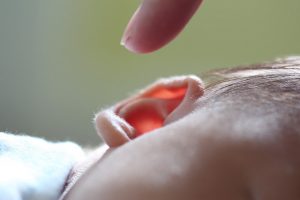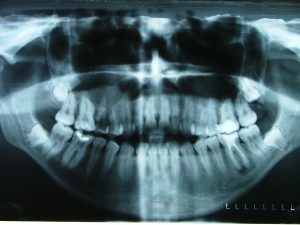This is our last in the series of blogs about Trismus. We will look at the treatment and prevention of it.
Trismus – Recap
Trismus is difficulty opening the jaw. It is a temporary condition lasting approximately two weeks.
Trismus occurs when the muscles of mastication (chewing) are injured in some way. This may be due to prolonged opening of the mouth during a dental appointment or if when giving an injection the needle nicks the muscle i.e. buccinators/medial pterygoid, causing injury.
Extraction of lower third molars (wisdom teeth), may cause trismus due to inflammation in the area of the muscles of mastication or direct trauma to the TMJ (temporomandibular joint).
Prevention
There is no set answer on how to prevent trismus. What is most important is to try to prevent what is causing it…this may be difficult to do.
If clenching or grinding is the cause, then perhaps a night guard will help to prevent this. The night guard will help the muscles of the head and neck i.e. masseter/temporalis to relax….please see the blog ‘TMD: Treatment Options’, posted on November 3rd, 2011.
As was mentioned in a previous blog (which discussed the causes of trismus), individuals who undergo radiation therapy to the head and neck are more prone to developing it.
It is helpful to have physical therapy of the jaw while having the radiation. This can help to decrease the risk of trismus.
Trismus, as discussed previously, is associated with infections of the jaw. It is important to treat any sign of an infection if it appears. This includes: pain, swelling, redness and warmth of the area. Preventing spread of the infection can prevent the development of trismus.
Treatment
Most of the treatment for trismus occurs during the acute phase. This includes:
1) Heat applied to the area. Place moist hot towels on the affected area for 15-20 minutes every hour.
2) Pain relievers (analgesics). Most of the time aspirin is sufficient as the accompanying pain is usually mild. It is used for its anti-inflammatory properties. If the pain is more severe, then a narcotic may be prescribed.
3) A soft diet.
4) Muscle relaxants (if necessary) to manage the initial phase of the muscle spasm. Tranquilizers (benzodiazepines) may be prescribed.
After the acute phase (which lasts approximately two weeks), we advise physiotherapy to aid in opening and closing the mouth and lateral movements of the lower jaw (mandible). Exercises should be done a few times a day. We suggest five minutes every 3-4 hours. Physiotherapy is often suggested for extended periods of time so that the trismus does not get worse or return. Sugarless chewing gum is also beneficial as it encourages lateral movement of the jaw. There are also appliances that can be used to help to slowly open up the mouth.
Dental treatment in the involved area should be avoided until the patient is comfortable and can open their mouth without duress.
Most individuals usually notice some relief from the pain of trismus after 48 hours. If the pain continues for more than 48 hours, then infection is a possibility. If this is the case, then a course of antibiotics is advised. If there is no improvement with antibiotics in about 5-7 days, then the patient should be referred to an oral surgeon for further analysis.
Conclusion
Again, it is important to determine and eliminate the cause of trismus. Trismus that is caused by infection and joint inflammation has a good prognosis. If treatment is delayed, the prognosis is not as good.
Yours in good dental health,
Dr. F. Keshavarz Dentistry, Brampton’s Gentle Dentist







